Oliver and my parents and I are spending the day at the PEI Bluegrass and Old Time Music Festival in Rollo Bay. Here’s a short taste of the Farm Hands Quartet from Nashville.
Today’s notebook has some mind-bending wavy red and gold Japanese paper endpapers and a hot green neon text block. This is the thickest notebook I’ve made so far, and I ran into some paper-wrangling challenges in trying to line up the signatures in the text block before the first gluing. I sense an ingenious jig is in my future; to the YouTube. See also Sting.
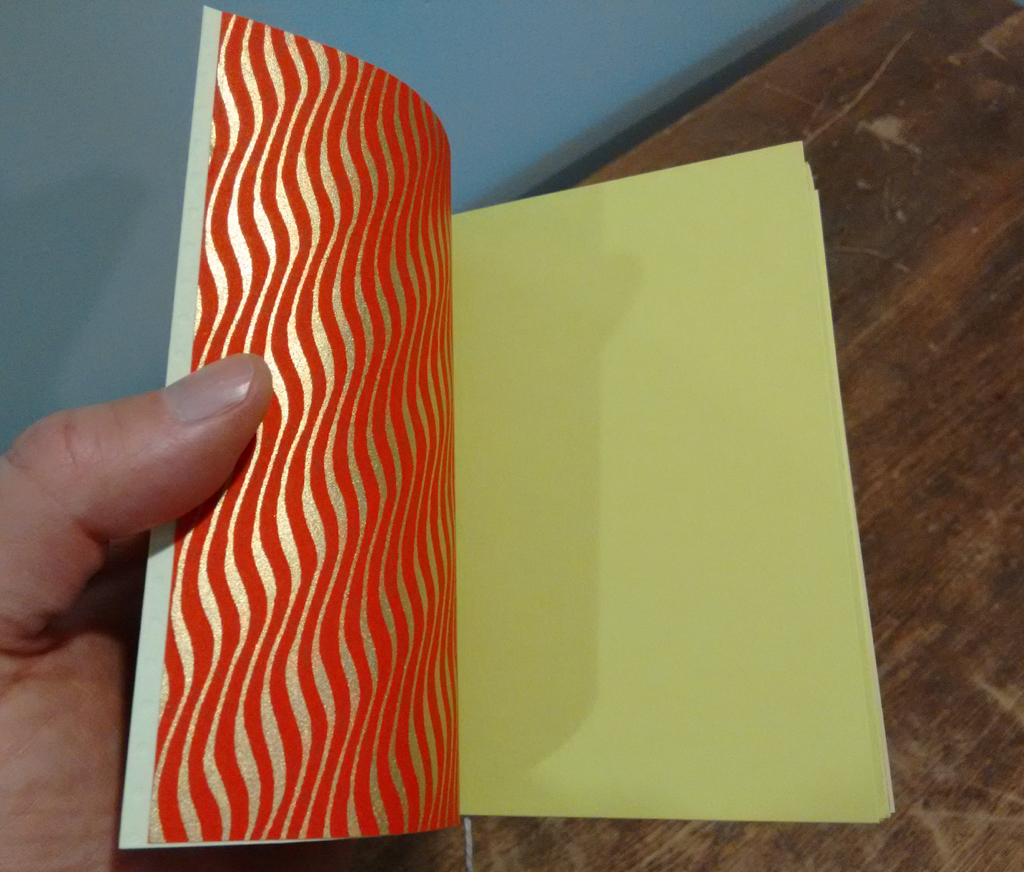
I am a big fan of the window fan: our 189 year-old house is pretty good at keeping cool in the day if you fill it with cool air overnight, and 2 or 3 strategically-placed window fans have, for the last 16 years, been enough to do the job.

I last purchased fans about a decade ago and, if memory serves, they were plentiful in local stores, with several different models. We were well-served by our fleet of fans until this year when, all at once, they disintegrated before our eyes, riddled with mold and mildew and with various plastic bits and bobs falling off. It was time to replace them.
My first stop was Home Hardware on St. Peters Road: it’s close by, the staff are friendly, and they generally have a good product selection.
I picked up a couple of 3 Speed/3 Fan Thin Window Fans from Bionaire, based on its thin profile and claims of “40% greater air velocity compared to similar window fans.” I installed one in Oliver’s room and one in our bedroom and left them running full-tilt overnight.
I was not impressed. I’m not sure what the “40% greater air velocity” claim is relative to — perhaps it’s simply relative to other “tiny 3-blade window fans” as opposed to being relative to “other window fans” — but the airflow was depressingly tepid compared to our old fans, and our room was almost as warm as it would have been if we’d had no fan running at all.
So I returned those fans yesterday and exchanged them for the 2 Speed 2 fan 7” from Honeywell, the only other model they sell. I reasoned that because this model had a similar form-factor to the old set, we’d get similar performance (I also saved $46 in the process, the difference between the price of the Bionaire and the Honeywell).
The Honeywell model was, alas, also a big step down from what we’ve been used to: two speeds (as opposed to three), uni-directional (the old fans had a “reverse the fan direction switch”), not nearly as powerful and, most concerning, with the “accordion wings” that used to adorn every model of fan replaced with cheaper and less flexible plastic sheets.
This last factor was a deal-breaker in this case: the fans simply wouldn’t fit in our windows, as with the “fins” installed they were too big and without the fins installed there were gaps.
So I returned the Honeywell fans this afternoon, thus exhausting our options at Home Hardware.
Next step was Canadian Tire, where we’d purchased all of our previous fans.
Nowhere was the seeming transition from window fans to cheap air conditioners more obvious than in aisle 29 in that store: they now sell a single model of 7” window fan, made by Likewise, and it was lost in a jungle of air conditioners of various formats. I don’t need my air chilled: the earth already does that for me; I just need the chilled air moved inside, so there’s no reason to get an air conditioner, despite prevailing trends.
I didn’t even bother with the $37 Likewise: we took one out of its box and found it cheaply constructed and similarly limited in functionality. We left Canadian Tire empty-handed.
After a quick stop for an cold brew coffee we ended the afternoon at Home Depot where the only model of window fan in stock was the 9” Twin Window Fan. I was impressed by the size of the blades — surely 9” blades will move more air than 7” blades — and this model seemed to have all the features we were looking for (accordion-style fins, reversible motor, 3 speeds).
The only problem was that they only had a one, and I wanted two.
Just before giving up, I noticed that there was a fan mounted to the wall as part of a fan display. I tried to find a staff person to see if I could buy it off the wall, but I couldn’t find one. Noting that it had a price tag on it, which to my mind makes it “for sale,” I slipped it out of its mounting bracket, grabbed the one in the box, and headed to the self-checkout where the robotic cashier happily let me purchase it.
As I write the fans are in the trunk of our car waiting for installation tonight. I shall report back on the results.
Today’s notebook (see also here) recycles another part of the Architecture of Peace issue of Volume magazine for its cover. It’s smaller – just 4 by 2 inches – and made to slip inside my bag. The endpapers are a lovely ruffled Japanese paper in ruddy brown.
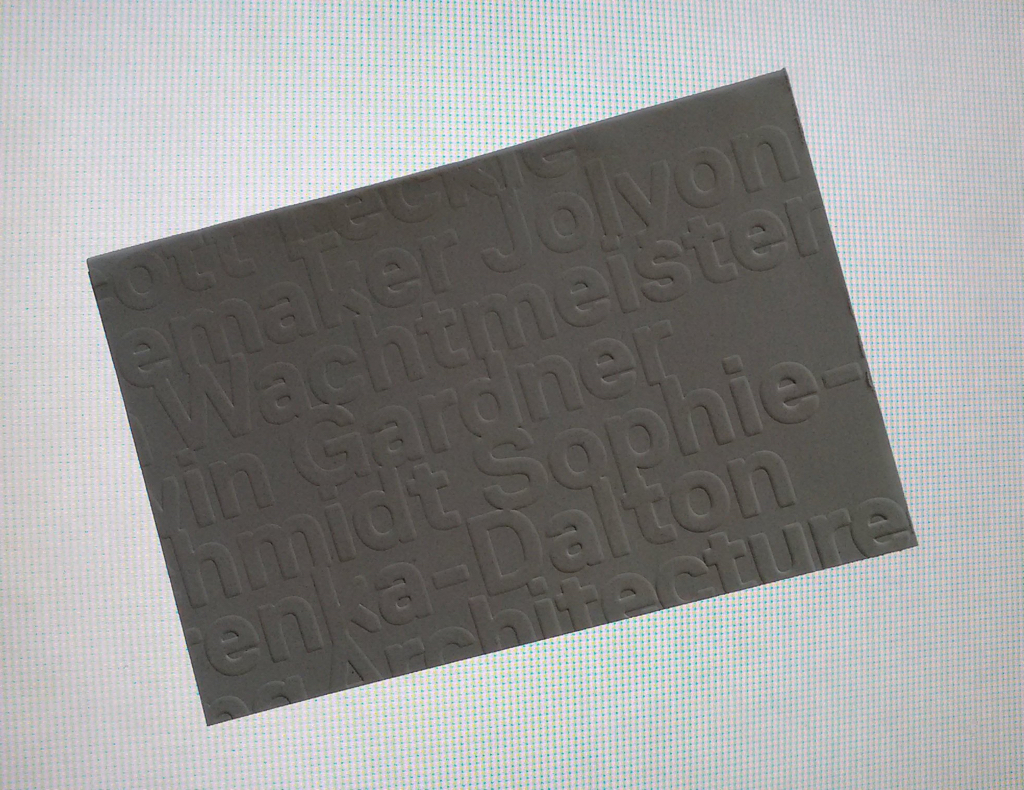
The Queen Elizabeth Hospital stops charging for parking on July 1st. So this morning, dropping off a friend for day surgery, is likely my last time paying.

I’ve been on something of a notebook-marking tear this week. Every once in a while I remind myself that it’s possible to actually make your own notebooks – it comes as a surprise to me every time!
This time around it’s all by way of beta-testing perfect-binding approach for my book of klischees: I’m experimenting with glue and covers and using ribbons and string as bound-in bookmarks.
For today’s project I took 20 sheets of letter-sized paper and cut them in half, and then folded each each into a signature for the notebook; I stacked the signatures together into a text block, added some end papers, clamped the result in a book press, and glued the spine with white glue (three coats).
For the cover I used an old issue of Volume magazine: I cut off its back cover, sized it to the book, and glued it – and a string for the bookmark — to the text block.
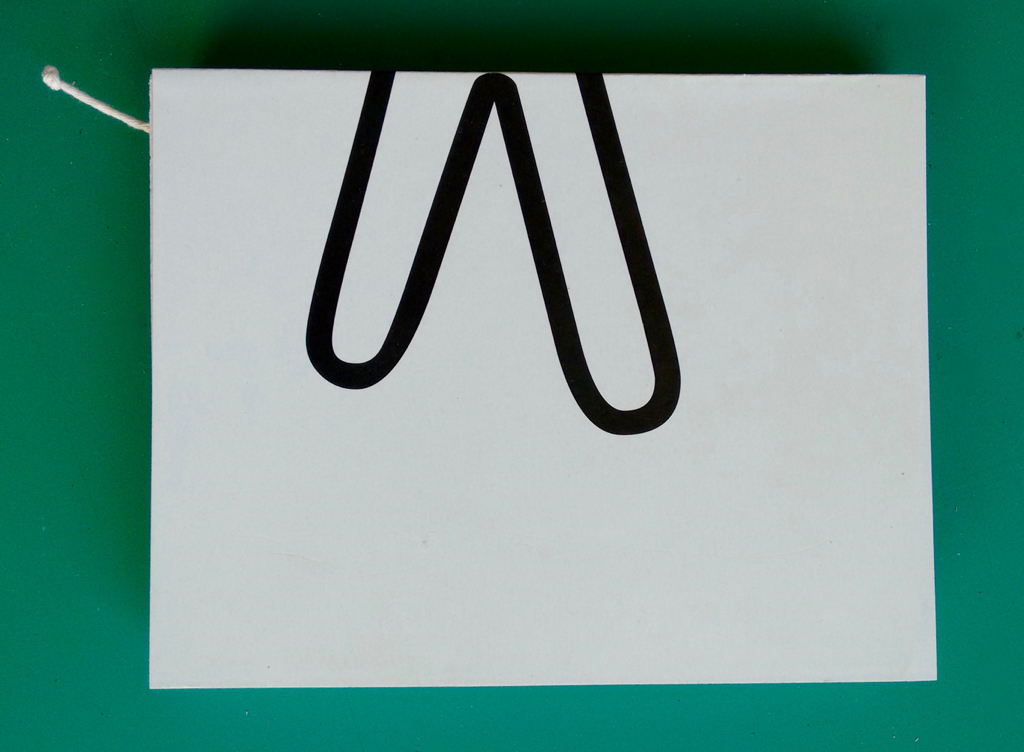
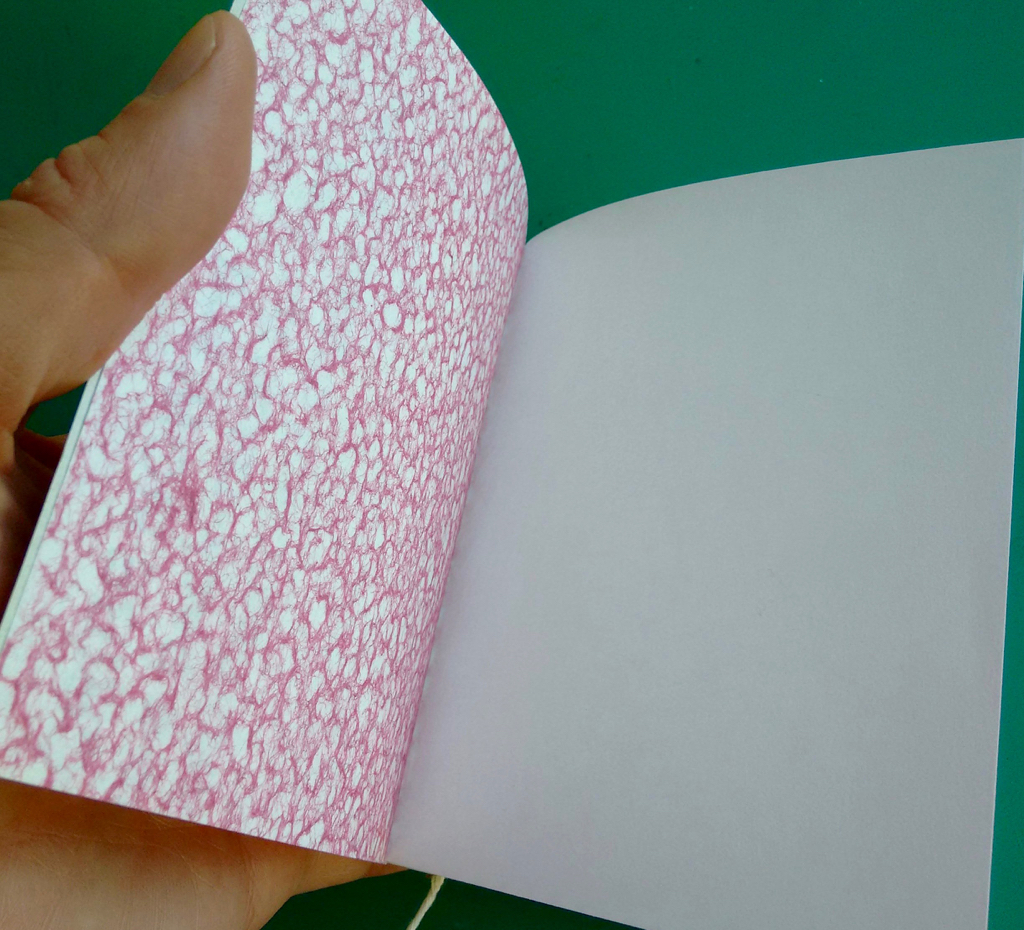
When Chrome 50 was released in April, my WhatsMyLot.com app stopped working because with that release Chrome would no longer allow use of the Geolocation API for non-secure sites.
The reasons for this are sound:
Location is sensitive data! Requiring HTTPS is required to protect the privacy of your users’ location data. If the user’s location is available from a non-secure context, attackers on the network will be able to know where that user is. This seriously compromises user privacy.
In other words, you probably don’t want your specific location, which WhatsMyLot.com needs to locate the township lot you’re standing in, flying around the Internet in the clear for anyone to intercept.
To make this work I needed to do two things:
First, I needed to purchase and install an SSL certificate. This cost me $34 wholesale from RapidSSL and took about 15 minutes to request and configure. I had to update my Apache server configuration to serve the site on port 443 instead of port 80, and I needed to ensure that any traffic going to port 80 got redirected to port 443.
Once that was done, the site was serving from https://WhatsMyLot.com/. But it still wasn’t working properly.
Chrome’s JavaScript console was reporting two errors:
Refused to execute script from 'https://whatsmylot.com/data/pei-lots-wgs84-simplified.geojson' because its MIME type ('') is not executable, and strict MIME type checking is enabled.
whatsmylot.com/:1 Refused to execute script from 'https://whatsmylot.com/data/lot-data.json' because its MIME type ('application/json') is not executable, and strict MIME type checking is enabled.
There are really two separate errors here – the MIME type of .geojson files wasn’t configured in Apache, and Chrome wasn’t executing JSON files – but there was a simple, common solution.
The app needs two objects define to work properly, metadata and lots. These are JSON objects that define the metadata about each lot and the geographic coordinates of each lot’s polygon respectively. For ease of management, I had these loaded from the index.html like this:
<script src="data/pei-lots-wgs84-simplified.geojson"></script>
<script src="data/lot-data.json"></script>
While this worked, it technically wasn’t correct, as these were JavaScript files, not GeoJSON nor JSON files. Chrome’s complaint, in a sense, reflects this. The fix was easy: I renamed the files with .js extensions, and changed the index.html to:
<script src="data/pei-lots-wgs84-simplified.js"></script>
<script src="data/lot-data.js"></script>
With that change Chrome users are again able to identify which of the Samuel Holland-surveyed townships lots on Prince Edward Island they’re in at any given time. The source code repository has been updated accordingly.
When Canadian Tire decamped for the far northern reaches of Charlottetown, HomeSense and Mark’s moved into its old location on Buchanan Drive and, as part of the renovations of the area associated with this, a new passageway, pictured below, was opened to the Staples parking, allowing traffic that, during the Canadian Tire years, was never allowed to pass.
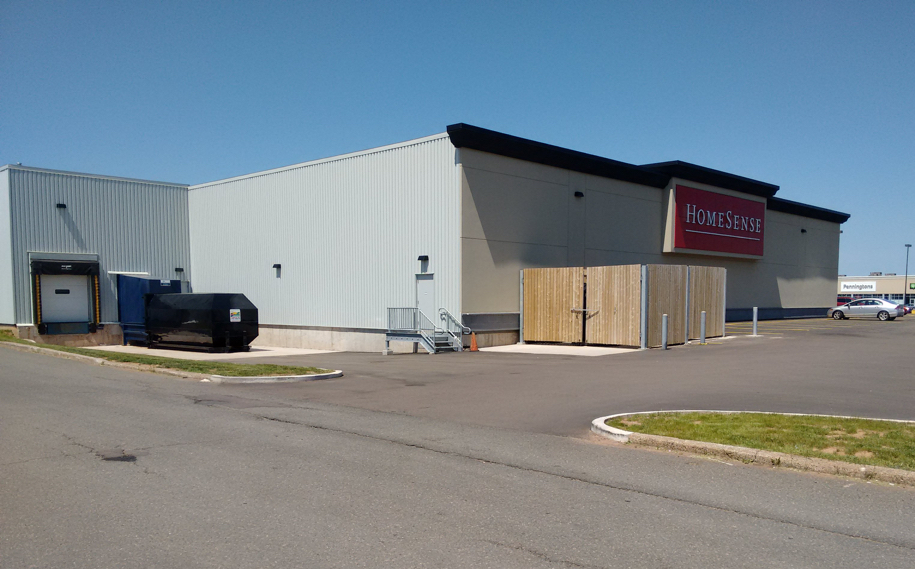
This small change has been transformative if you’re moving about the big box district of the city. Let’s say you’re at Staples, for example, and want to go around the corner to Michael’s. Before the change you’d have to make a tricky left turn onto University Avenue from the Staples parking lot, fighting busy traffic in both directions. Then you’d have to get in the left-turn lane at the corner of Buchanan and wait for the light to change, eventually turning onto Buchanan.
With the new passageway you can simply head out of the Staples parking lot into the HomeSense/Mark’s parking lot and onto Buchanan. It can shave 5 minutes off the journey, and a lot of hair-raising traffic-crossing.
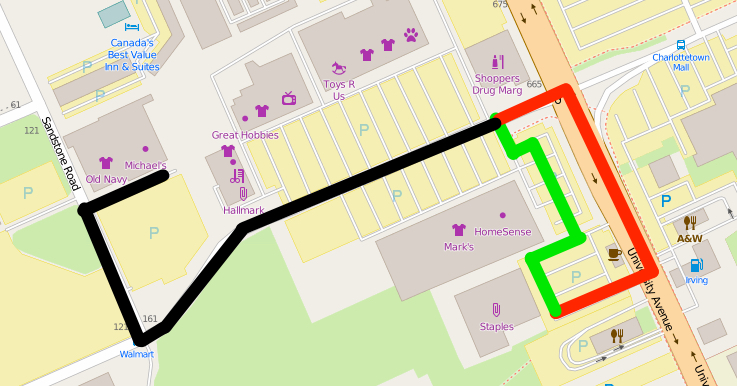
I realize that such things shouldn’t loom so large in my consciousness, but they do.
An interesting profile of Toronto impresario Jeff Stober in Toronto Life:
Later, while looking at renderings for the hotel’s new ensuite bathrooms, Stober zeroed in on a sketch of a shower with an exposed pipe. “Why would you expose a fragile pipe? That’s a non-starter. What happens when people have sex in the shower? They’ll rip it off. They’ll burn themselves on it. No. I have zero interest in that. Next?”
Stober is the developer of the The Drake Hotel on Queen Street West in Toronto, a phenomenon I’ve missed completely during my 23 year sabbatical from Ontario.

 I am
I am